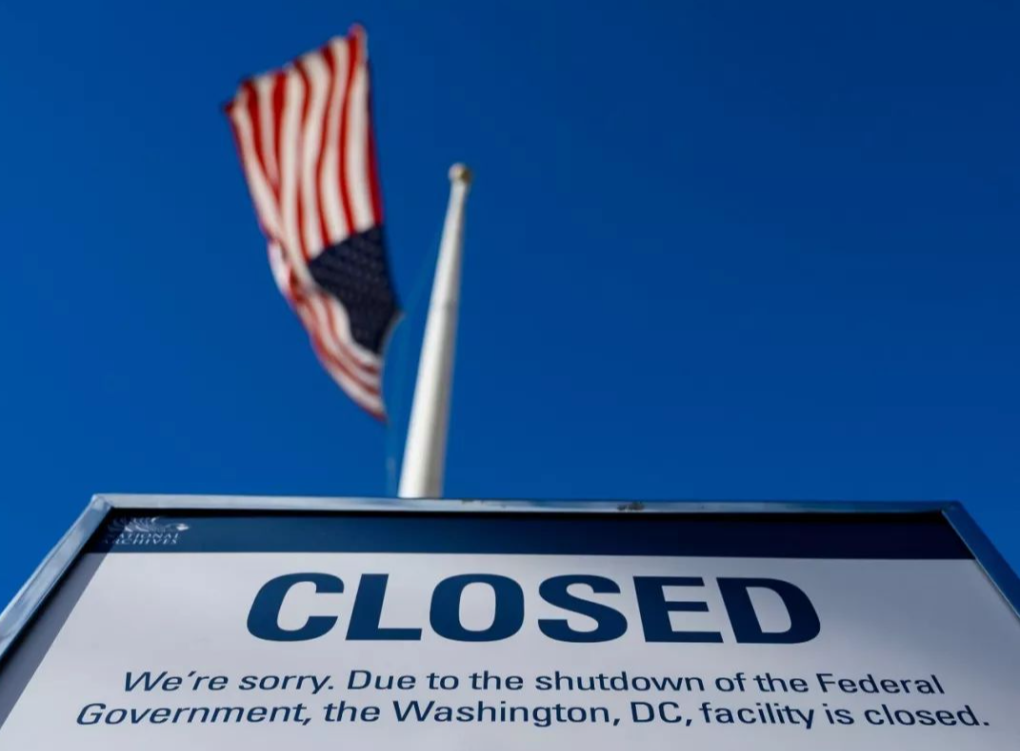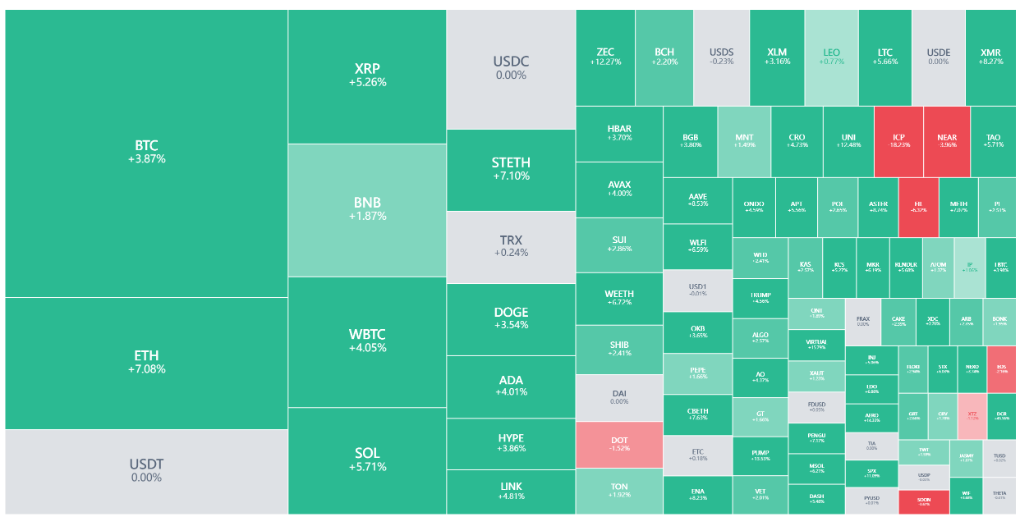Under the dome of the U.S. Capitol, the tug-of-war among politicians is finally nearing its end, while the lives of ordinary Americans have long been riddled with difficulties.
At 8 AM UTC on November 10, the U.S. federal government shutdown entered its record-breaking 40th day. In this political deadlock, Senate Majority Leader and Republican John Thune finally released a positive signal: a potential agreement to end the government shutdown is "gradually being reached."
This political crisis, lasting over a month, has not only left 800,000 federal employees facing unpaid work but has also pushed the U.S. economy to the brink of recession. As the year-end holiday season approaches, the chain reactions of the shutdown are becoming fully apparent, affecting everything from air transport to goods supply chains, from domestic livelihoods to overseas military bases.

1. The Roadmap to End the Shutdown is Gradually Clarifying
After 40 days of political maneuvering, negotiators from both parties have finally found a possible way out. Senate Majority Leader Thune confirmed that a potential agreement to end the government shutdown is forming, but he cautiously stated, "this does not guarantee that an agreement can be reached."
The core of this negotiation is to design a solution that allows both sides to save face.
Key progress in negotiations includes:
● The Senate Appropriations Committee has announced three bills aimed at ending the government shutdown. The process to end the shutdown will be divided into three steps: first, a vote on the temporary funding resolution passed by the House of Representatives, followed by amendments to that resolution to include full-year appropriations, along with an agreement to vote on the healthcare policies sought by the Democrats on the scheduled date.
● U.S. President Trump has spoken on social media for two consecutive days, insisting on his position of restarting the government first, then discussing healthcare differences. This statement provides clear guidance for Republican negotiators.
● Any proposal must receive more than 60 votes in the Senate to pass, meaning Republicans must seek support from Democratic lawmakers. Currently, the ratio of seats in the Senate is 51:49, with Republicans holding a slight advantage.
Key Content of the Agreement Negotiation

Another key factor at the negotiating table is the pressure of time. As the holiday season approaches, the threat of a supply chain crisis is becoming increasingly prominent, prompting both parties to accelerate the negotiation process.
2. Economic Dilemma: A Comprehensive Crisis Triggered by the Shutdown
As the U.S. government shutdown has lasted over a month, economic alarms have shifted from low warnings to deafening alerts. From macroeconomics to ordinary livelihoods, the costs of this political deadlock are becoming fully apparent.
Economic Alarm Bells Ringing
● U.S. Treasury Secretary Mnuchin issued a stern warning on November 9 that if the "shutdown" continues, U.S. economic growth in the fourth quarter will be halved. On the same day, White House economic advisor Hassett's prediction was even more pessimistic, stating that if the federal government "shutdown" persists, the U.S. fourth-quarter economic growth rate could turn negative.
● Consumer confidence has also plummeted. The University of Michigan's consumer confidence index fell to 50.3 in early November, the lowest level since June 2022, just a step away from the historical low. The survey shows that this decline is widespread across the entire U.S. population, observable among different age, income, and political inclination groups.
Livelihood Dilemmas and Global Impact
● The U.S. aviation industry is in serious chaos due to a shortage of air traffic controllers caused by the government shutdown. The Federal Aviation Administration (FAA) has announced a reduction in flight volumes at 40 major airports across the U.S. According to flight tracking website data, on November 9, the number of canceled flights at U.S. airports exceeded 2,000 for the first time, with delayed flights also surpassing 7,000.
● The supply chain is also flashing red. Treasury Secretary Mnuchin warned that the speed of goods transportation in the U.S. is slowing down, and due to the ongoing "shutdown," "shortages may ultimately arise, whether in the supply chain or during the holiday period."
● Meanwhile, the negative impacts of the U.S. government shutdown have long exceeded national borders, affecting overseas U.S. military bases. Local employees at U.S. military bases in several European countries are facing unpaid wages, involving countries like Italy, Portugal, Germany, and Spain.
● The Italian government issued a formal statement on the 8th, urging the U.S. side to "demand" the payment of wages for non-military employees at the U.S. base in Italy. The Italian Foreign Ministry stated that about 2,000 Italian employees at the U.S. base in Italy have not received their October wages.
● The local government in Portugal has approved bank loans to advance wages for U.S. military base employees; Germany has already advanced wages for 11,000 local employees, hoping to be reimbursed after the U.S. ends the "shutdown."
Economic and Livelihood Impact Data Comparison

The U.S. job market is also beginning to deteriorate. U.S. companies announced layoffs of over 153,000 people in October, a 175% increase compared to the same period last year, marking the highest level for the same period in over 20 years. This data indicates that the impact of the government shutdown is spreading from the public sector to the private economy.
3. Market Reaction: Expectations and Challenges for Cryptocurrency
As the government shutdown nears its end, financial markets have begun to respond positively. The cryptocurrency market has seen a slight rebound after a recent pullback, with Bitcoin rising over 2.6% in a day, surpassing $105,000; Ethereum broke above $3,600, with a daily increase of 6.13%.

● Some analysts point out that resolving the government shutdown may bring much-needed relief to the cryptocurrency market. Looking back at the government shutdown from 2018-2019, Bitcoin experienced an astonishing increase of over 265% within five months after the issue was resolved.
● Traders in the prediction market have also increased their bets on a swift resolution to the government shutdown. Data from Polymarket shows that the likelihood of the shutdown being resolved by Thursday has risen from 27% a day earlier to 54%.
Expectations for Improved Liquidity
The end of the government shutdown is expected to inject liquidity into the cryptocurrency market from two aspects:
● During the shutdown, the U.S. Treasury General Account (TGA) acted like a "financial black hole," with funds only flowing in and not out, causing the account balance to swell from about $800 billion to over $1 trillion, equivalent to over $200 billion in liquidity being withdrawn from the market.
● After the shutdown ends, this massive amount of funds will be reintroduced into the market, equating to a significant injection of liquidity into the financial system, which is a major boon for liquidity-sensitive assets like cryptocurrencies.
Interwoven Macroeconomic Factors
In addition to the news of the government shutdown, other macroeconomic factors are also shaping the current market environment:
● The U.S. October CPI data, originally scheduled for release soon, has been postponed to November 13. The absence of this key inflation data has made both the market and the Federal Reserve more cautious in their decision-making, somewhat suppressing the performance of risk assets.
● Federal Reserve Vice Chair Jefferson recently stated that given interest rates are now closer to neutral levels, future policy actions need to be "more cautious." This statement has lowered market expectations for aggressive rate cuts by the Federal Reserve, exerting some pressure on the prices of assets like cryptocurrencies.
The lights in the Senate chamber are still on, as lawmakers engage in final negotiations for the ultimate agreement. Trump's statements on social media also seem to indicate that the deadlock is about to come to an end: "It seems we are very close to ending the government shutdown."
From Wall Street to Main Street, from the U.S. mainland to overseas military bases, countless people are hoping that this 40-day political deadlock can come to a swift conclusion. For ordinary people caught in this political storm, the countdown to restoring normal operations has finally begun.
Join our community to discuss and grow stronger together!
Official Telegram community: https://t.me/aicoincn
AiCoin Chinese Twitter: https://x.com/AiCoinzh
OKX Benefits Group: https://aicoin.com/link/chat?cid=l61eM4owQ
Binance Benefits Group: https://aicoin.com/link/chat?cid=ynr7d1P6Z
免责声明:本文章仅代表作者个人观点,不代表本平台的立场和观点。本文章仅供信息分享,不构成对任何人的任何投资建议。用户与作者之间的任何争议,与本平台无关。如网页中刊载的文章或图片涉及侵权,请提供相关的权利证明和身份证明发送邮件到support@aicoin.com,本平台相关工作人员将会进行核查。




